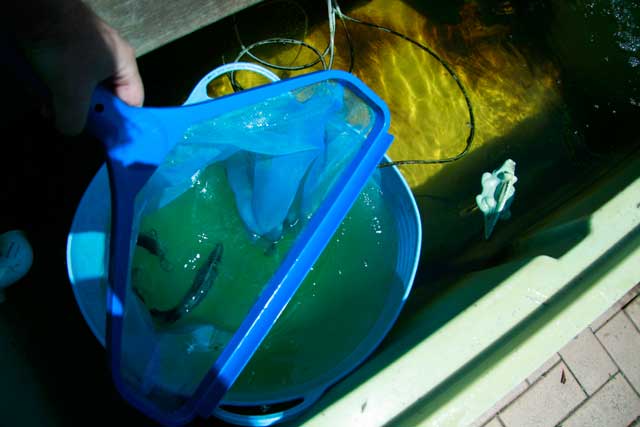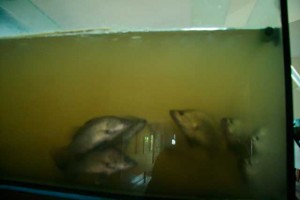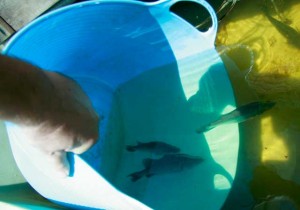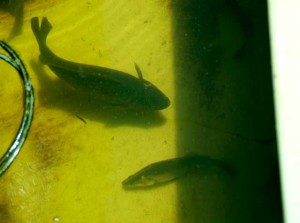Growing Barramundi in your Lounge Room
Probably not the most normal activity and something that most people would find a little ‘strange’ but over the winter months here in Queensland we decided to grow some barramundi in a six foot aquarium tank housed in our lounge room to keep them warm and allow them to grow out over winter. Barramundi require good oxygenation and warm water and thats what we provided in a six foot aquarium tank mounted on a table in the center of our lounge room. The thermal mass of the house meant keeping the temperature inside the fish tank was a lot easier to maintain at around 24 degrees Celsius. But having said all that – its probably something I would not recommend doing – given that you will have to listen to the constant pump noise and the trickle of water being fed through a large canister filter that was online 24/7. Its enough to drive you crazy. So be warned. Barramundi in the lounge room equals not a very good idea! Thats why garages or basements were invented. But we thought most people that keep tropical fish have them on display – so why not barramundi?
When we got them they were pretty small and tiny. They were also carnivorous and prone to dieing if the water ammonia levels rose slightly and especially if the water wasn’t properly cycled with bacteria to process their waste. Something we experienced. A six foot aquarium is very big for tiny barramundi. Less so as they mature. Now approaching six to nine inches in size our 14 barramundi were also big crappers. The canister filter was under full load and not able to sufficiently filter their waste. Keeping the system from not overloading the fish meant constant water changes. What started off as a weekly water change began to resemble an exponential curve as the fish started growing the poop they made kept the water a dark murky yellow haze. Partial water changes began to increase. Once every three days or even two days. The excess water was used on our garden plants outside. The plants did very well. You will read of people saying Barramundi requiring very clean pristine water quality. Our water quality resembled a toxic waste stream! A yellow haze that was described by visitors as Ganges Green. Even so – the fish seemed happy and would appear out of the yellow gloom to peer at me as I approached the tank – hungry for food.
I was always careful not to overfeed them and very few fish pellets made it past their eager eyes over to the far side of the tank. Today when I decided to finally move them into the larger outdoor aquaponics tank – so hungry where they that when I decided to put a thermometer into their tank to measure the temperature – I could feel them trying to nip the bottom of the thermometer thinking it might be food!
The aquaponics system had a water temperature of 22 degrees. Not ideal but seeing that the water temperature was only increasing – something I was prepared to experiment and see how the barra would cope. I floated three candidates in one of those plastic buckets that I discovered is an excellent way to slowly acclimatise the fish. I left them with a couple of airlines in the basket for 20 minutes, slowly adding a little more water as I knew the pH would be different.
When I let the barra out into the main tank – they appeared sluggish and cold. Their white stress line marking was more visible over their nose. I hoped that I hadn’t stressed them too much.
A few larger Jade Perch swam up to investigate their new neighbours. It will be interesting to see how well the Barra cope. The water quality of an aquaponics system filtered by all those plants and pebbles in the growbeds means the water quality is pristine. Hopefully the barramundi will appreciate the cleaner water. Moving them from one tank to the other means the remaining fish inside the house will have a bit more space to swim around in and better water quality.










Recent Comments